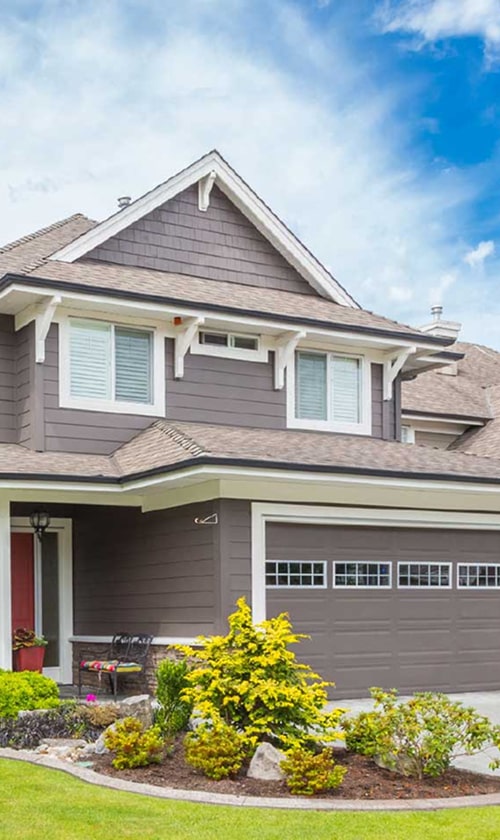Understanding Heat Pumps

When we discuss heat pumps, we’re referring to devices that transfer heat from one place to another to heat or cool a space. With various types available and a unique mode of operation, their components play crucial roles in their efficiency.
Types of Heat Pumps
There are primarily three types of heat pumps we can consider for home heating:
- Air-source heat pumps (ASHPs): These systems transfer heat between the air inside a building and the air outside. They are widely used because they are effective in a variety of climates.
- Ground-source heat pumps (GSHPs), also known as geothermal heat pumps: These utilize the stable temperature of the ground as the heat source or sink. They are more efficient than air-source pumps but also more expensive to install.
- Water-source heat pumps (WSHPs): Similar to GSHPs, these systems use nearby water bodies as the heat source or sink to transfer heat.
- Hybrid heat pumps: These combine features from the above types, typically an air-source heat pump with a secondary heat source, to optimize efficiency based on different conditions.
How Heat Pumps Work
Heat pumps operate on the principle of heat transfer. Let’s look at the process:
- Absorption: The heat pump absorbs heat from a heat source (such as the air, water, or earth) using a low-temperature, liquid refrigerant.
- Compression: The absorbed heat is increased as the refrigerant is compressed, raising its temperature.
- Heat release: The now hot refrigerant passes through a heat exchanger, releasing heat to the interior of a building.
- Refrigerant cycle: The refrigerant cools down as it transfers heat, returns to its liquid form, and the cycle repeats.
Heat Pump Elements
- Refrigerant: It’s the fluid that carries heat through the heat pump system. The refrigerant’s properties are crucial as it undergoes phase changes during the heat transfer process.
- Compressor: The heart of a heat pump, which increases the temperature of the refrigerant.
- Evaporator and condenser coils: These are responsible for the absorption and release of heat, respectively. The evaporator acts as the site for heat absorption, whereas the condenser releases the heat into the home.
By choosing the right heat pump for our needs and understanding its components and how it works, we can efficiently manage home heating and potentially reduce energy costs.
Advantages of Heat Pumps

Heat pumps provide an array of benefits, particularly in their capacity for energy-efficient temperature control and their role in reducing carbon emissions. These systems serve as an eco-friendly solution to our heating and cooling needs.
Energy Efficiency
Heat pumps stand out for their ability to move heat rather than generate it through combustion. This process involves significantly less electricity, which translates to lower utility bills for us. In heating mode, a heat pump can deliver one-and-a-half to three times more heat energy to a home than the electrical energy it consumes. This is a measure of a heat pump’s efficiency, known as its Coefficient of Performance (COP).
- High COP: Indicates a more efficient transfer of heat.
- Savings: On average, heat pumps can save us up to 50% on our utility bills compared to conventional heating systems.
Environmental Benefits
By utilizing less electricity and boasting the ability to draw energy from renewable sources, heat pumps reduce our carbon footprint and support environmental conservation.
- Low Carbon Emissions: Heat pumps can be powered by renewable energy, reducing reliance on fossil fuels.
- Eco-Friendly: Policies are increasingly favoring renewable energy, making heat pumps an environmentally friendly choice.
Heating and Cooling Capabilities
We benefit from a dual-function system that can both heat and cool our space. This adaptability ensures year-round comfort with just one system.
- Temperature Control: Heat pumps provide precise control over our indoor climate, offering both heating and cooling options.
- Versatility: Whether it’s a cold winter evening or a hot summer day, heat pumps maintain the desired temperature efficiently.
Cost Considerations

When considering heat pumps for home heating, it’s important to examine the financial aspects closely. These include the initial outlay, potential cost savings over time, and ongoing expenses.
Installation and Upfront Costs
Installing a heat pump can be a significant investment. The upfront cost is shaped by the size of the unit, the type of heat pump (air-source, ground-source, or water-source), and the complexity of the installation. Here are some specifics:
- Average Cost: Installation of a heat pump typically ranges from $4,000 to $8,000 for air-source heat pumps and $10,000 to $20,000 for ground-source heat pumps.
- Financing: Various financing options can help manage the initial expense, such as loans and payment plans offered by installers.
Long-Term Savings and Incentives
Over time, heat pumps can be cost-effective due to lower utility bills and available incentives:
- Energy Bills: Heat pumps are more energy-efficient than traditional heating systems, which can lead to reduced energy bills.
- Tax Incentives: Homeowners may be eligible for tax credits and rebates which can offset the upfront cost. For instance:
- Federal Tax Credits: These can cover a certain percentage of the cost, up to a specified limit.
- State Rebates: Some states offer additional rebates, which further reduce the initial financial burden.
Maintenance and Operation Costs
The long-term affordability of heat pumps also depends on maintenance and operation:
- Maintenance: Regular servicing can prolong the system’s lifespan, which is typically around 15 years for air-source heat pumps and up to 50 years for the underground piping of ground-source heat pumps.
- Utility Bill Impact: Heat pumps can lead to a consistent decrease in the monthly utility bill due to their efficiency, especially when replacing less efficient heating systems.
Through strategic planning and taking advantage of various incentives, we can mitigate the initial cost of heat pumps and enjoy considerable savings over time.
Challenges and Limitations

While heat pumps offer a number of benefits for home heating, we must acknowledge some challenges and limitations that could impact their efficiency and feasibility in certain scenarios.
Climate Limitations
Heat pumps are less effective in colder climates, especially when temperatures drop below the freezing point. This is because they extract heat from the outside air, and the colder the temperature, the harder it is for the heat pump to work efficiently. In such zones, a supplemental heating system may be necessary to ensure consistent warmth.
- Efficiency Drops: In climates where temperatures frequently fall below 32°F (0°C), heat pump efficiency can decrease, requiring more energy to maintain comfort.
- Supplemental Heating: To counteract this loss of efficiency, additional heating methods might need to be installed, further impacting overall costs.
Installation Requirements
The installation of a heat pump is not a one-size-fits-all solution; it requires careful consideration of several factors. Proper ductwork and insulation are essential for a heat pump to function efficiently. Moreover, each household will have different requirements based on its unique heating and cooling zones.
- Ductwork Assessment: Older homes may lack the necessary ductwork, leading to additional installation costs.
- Insulation Upgrades: Inadequate insulation can lead to heat loss, demanding more from the heat pump and reducing its performance.
Noise and Space Considerations
We must also consider noise and space when installing a heat pump. These systems can produce more noise than traditional furnaces, which could be a concern for some homeowners. Additionally, the outdoor unit requires sufficient space for proper airflow, potentially limiting placement options.
- Noise Levels: Some models can generate noise that’s noticeable, especially if the outdoor unit is near a bedroom or living area.
- Space for Outdoor Unit: The outdoor component needs to be placed carefully to ensure it has enough space to operate effectively and safely, without obstructing air circulation.
Comparing to Traditional Heating Systems
When considering heat pumps for home heating, it is crucial to assess their performance in relation to traditional systems such as furnaces and boilers. We will examine critical factors such as efficiency, cost, environmental impact, and the implications of moving away from fossil fuels, which serve as common energy sources for conventional heating systems.
Heat Pumps vs Furnaces and Boilers
Furnaces and boilers largely depend on the combustion of fossil fuels such as natural gas, propane, or fuel oil. These systems produce heat by burning the fuel source and then distributing the generated heat. Heat pumps, on the other hand, function by transferring heat from the outdoors into the home, even during colder months. They do not generate heat through combustion, thus eliminating concerns about gas leaks or carbon monoxide poisoning. Another key difference lies in the fact that heat pumps offer a dual functionality by providing both heating and cooling, whereas furnaces and boilers only provide heat.
- Furnace: Powered by gas, propane, or fuel oil; burns fuel to produce heat.
- Boiler: Heats water to provide warm air or steam for heating; uses gas, fuel oil, or electricity.
- Heat Pump: Moves heat from outside to inside; requires electricity and functions efficiently in a variety of climates.
Cost-Benefit Analysis
When evaluating the costs, it’s important to consider both initial investment and long-term savings. Heat pumps have higher upfront costs compared to traditional gas furnaces or electric resistance systems like baseboard heat. However, heat pumps can lead to substantial energy savings over time due to their high efficiency, especially in regions with mild to moderate climates.
Gas furnaces, while less expensive to install, may result in higher operating costs over their lifetimes due to the rising prices of natural gas and maintenance expenses.
Initial Cost: Heat Pumps > Gas Furnaces > Electric Heaters
Operating Cost: Heat Pumps < Gas Furnaces < Electric Heaters (over the long term)
Transitioning from Fossil Fuels
The move from traditional heating systems to heat pumps represents a shift towards reducing reliance on fossil fuels. By using electricity, which can be generated from renewable sources, heat pumps offer a more sustainable and environmentally friendly option. This transition can significantly decrease household carbon emissions and contribute to broader efforts in combatting climate change.
- Use of Fossil Fuels: Heat Pumps (Low/None), Gas Furnaces (High), Boilers (Varies)
- Environmental Impact: Heat Pumps (Lower Emissions), Gas Furnaces and Boilers (Higher Emissions)




